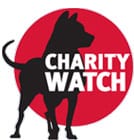Click here to view our:
Reporter Guide to Tobacco Endgame Policies
Progress on Tobacco Endgame Around the World
United States
– As of January 1, 2021 Beverly Hills and Manhattan Beach, CA implemented their bans on the sale of tobacco products. Read ASH’s statement here.
– At least a dozen other cities or counties in CA are considering that policy avenue.
– The State of California aims to virtually end the tobacco epidemic by 2035. The California Tobacco Control Program unveiled its endgame plans to the public health community in January 2021 and received a lot of enthusiasm. Learn more about ASH’s work in California here.
– Their Vision – “By 2035, transform California by eradicating the commercial tobacco industry’s influence and reducing the harm caused by tobacco products to the health, environment, and economic well-being of California’s diverse populations.”
– In 2019, Brookline, Massachusetts passed a Tobacco-Free Generation law that bans the sale of tobacco to anyone born on or after January 1, 2000. This policy effectively raises the age for legal sales of tobacco products by one year every year, allowing current people who smoke to continue while preventing future generations from starting. On July 19, 2021 Massachusetts Attorney General Maura Healey approved the ordinance. Read ASH’s statement here. A lawsuit brought by the tobacco industry was dismissed in 2022. Read more here>
– The United States Department of Health adopted the Healthy People 2030 platform, including a goal of less than 5% smoking prevalence by 2030. Unfortunately, in 2022 the goal was changed to 6.1%.
Europe
On February 3, 2021, the European Commission unveiled its “Beating Cancer Plan.” One of the Plan’s key actions is to reduce smoking prevalence to below 5% by 2040. The EC’s plan recognizes that it will be impossible to defeat cancer without reducing tobacco use. The Commission has established a task force to consider endgame policies, and ASH was invited to participate.
ASPIRE Countries: New Zealand, Finland, Ireland, Scotland, England, Sweden, Canada
Over the past decade, eight governments – the so-called ASPIRE countries – adopted goals to drive prevalence to very low numbers by a certain date.
– New Zealand was the first to set a goal – they hope to push prevalence down below 5% by 2025. On December 13, 2022, the New Zealand Parliament passed the most sweeping anti-tobacco law in the world, including Tobacco-Free Generation, drastically reducing the number of retailers, and reducing nicotine to non-addictive levels. Action Plan and Resources for Smokefree Aotearoa 2025 here>
Several countries have announced plans to examine New Zealand’s plan for potential adoption:
Ireland; 2022 Tobacco Endgame Report (including polling data)
– Finland has adopted the most ambitious prevalence target: below 2% by 2040. Other adopted targets include:
Scotland – < 5% by 2034.
Ireland – < 5% by 2025
Canada – < 5% by 2035
Sweden – < 5% by 2025
England – End combustible use by 2030
Bhutan
In 2007, the Himalayan nation of Bhutan was the first jurisdiction in modern times to ban the commercial sale of tobacco. Unfortunately, the Act was rescinded in 2020 due to COVID; it’s unclear if it will be reinstated once the pandemic subsides.
Denmark
March 2022 – Denmark’s government began considering a law which would end the sale of cigarettes for people born after 2010. Read more here> and read more here>
France
On February 4, 2021, France followed suit, when President Emmanuel Macron marked World Cancer Day by announcing its ten-year plan to reduce deaths from cancer by 50 percent. In his speech, Mr. Macron called for a “tobacco free generation,” although it is unclear if this refers to a specific policy or is aspirational.
Norway
On March 31, 2023, Minister of Health and Care Ingvild Kjerkol presented the government’s public health report. New tobacco strategy presented here (translated below using Google):
- Our vision is a tobacco-free generation, and we want to make arrangements for children born in 2010 and later to be given the opportunity to do so.
- Children and young people are a top priority. Children should be protected against becoming addicted to tobacco and the health risks it entails, says Kjerkol.
- The government will introduce a smoking ban in private cars in which children are passengers, in outdoor playgrounds, sports areas and parking lots, as well as common areas in apartment complexes.
- The government will also introduce a ban on the online sale of tobacco products and e-cigarettes to prevent sales to minors and to gain better control over which products are imported from abroad.
- The government is also introducing standardized packaging and a ban on flavorings for e-cigarettes.
Philippines
In 2016, Balanga City, Philippines passed a Tobacco-Free Generation law that bans the sale of tobacco to anyone born on or after January 1, 2000, effectively raising the age to purchase tobacco by one year every year. The tobacco industry sued, and won an injunction. Litigation is ongoing, but for now the tobacco free generation – which is turning 21 this year – is still fair game for tobacco marketing.
Spain
On February 12, 2021, a coalition of Spanish health and advocacy groups published its “Endgame Declaration of Tobacco in Spain 2030,” a detailed plan to make “tobacco consumption disappear from Spanish society” within ten years. The centerpiece of the plan is the enactment of the “Tobacco Free Generation” concept, which would bar sales to anyone born after 2006. Some health officials from the ruling party seem to be on board.
Wales
July 26, 2022 – long-term plan towards a smoke-free Wales by 2030.
- Theme 1: Reducing inequalities
- Theme 2: Future generations
- Theme 3: A whole-system approach for a smoke-free Wales
All these efforts require sustained effort to build and maintain political will and develop detailed plans, as California has done. But ending the commercialization of tobacco is no longer a fringe topic in public health.
Learn more about ASH’s Project Sunset Work

Key Resources
- White Paper: The Evidence for the Endgame by UpEnd Tobacco
- “Why ban the sale of cigarettes? The case for abolition” by Robert Proctor
- “The tobacco ‘endgame’: Is it possible?” by Eduardo Bianco
- Malone & Smith: An argument for phasing out the sale of cigarettes
- A new study shows that if pharmacies didn’t sell cigarettes, fewer people would smoke.
- A complete ban on the sale of cigarettes within 10 years, with smoking cessation support — is favoured by 44 per cent of smokers surveyed in Canada.








